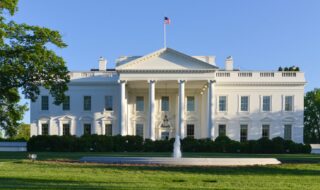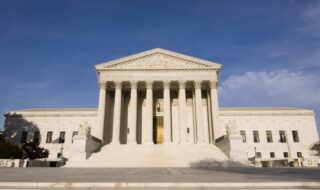NFIB Webinar Provides Updates on COVID-19 Small Business Relief
NFIB Webinar Provides Updates on COVID-19 Small Business Relief
May 21, 2021 Last Edit: June 5, 2025
NFIB Webinar Provides Updates on COVID-19 Small Business Relief

On May 12, 2021, NFIB’s COVID-19 webinar series provided an update on small business federal relief programs. Below is a summary of current information on each relief program. More resources to help small business owners navigate each of these programs and everything COVID-19 related can be found on NFIB’s website. You can watch the webinar recording here.
Economic Injury Disaster Loan (EIDL)
The EIDL is a non-forgivable, 30-year loan from the Small Business Administration (SBA) with a fixed interest rate of 3.75% for businesses. An EIDL covers working capital needs and normal operating expenses, including rent and utilities.
Small business owners may apply for an EIDL up until December 31, 2021. To qualify for an EIDL, a business must have:
1) Fewer than 500 employees; and
2) Been in operation prior to January 31, 2020.
- SBA recently increased the EIDL maximum loan amount from $150,000 to $500,000.
- For small businesses that already applied for and received an EIDL prior to April 2021, they may receive an email from the SBA regarding increasing their loan amount or may request an increased loan amount through the SBA portal.
- An EIDL loan may be repaid at any time with no pre-payment penalties or fees. First payments on EIDL loans made in 2020 are not due until 24 months after the date of the note, and 18 months for 2021 loans.
For further questions regarding an EIDL, including contact information for loan status updates and the loan-denial appeal process, small businesses can refer to this SBA FAQ.
Employee Retention Credit (ERC)
The ERC is a refundable tax credit up to $33,000 per employee. Small business owners may claim the tax credit for any calendar quarters between March 13, 2020 and December 31, 2021.
- To qualify for the ERC, a business must experience either a mandatory partial or full shutdown of operations or a reduction in gross receipts in one quarter compared to the same quarter in 2019, or the immediately preceding quarter. A business must have experienced at least a 50% reduction in gross receipts to qualify in 2020 and at least a 20% reduction to qualify in 2021. The calculation of gross receipts does not include other stimulus funds, such as PPP or EIDL funds.
- The tax credit is 50% of the first $10,000 in qualified wages per employee in a quarter with a maximum credit of $5,000 per employee for 2020, and is 70% of the first $10,000 in qualified wages per employee in a quarter with a maximum credit of $28,000 per employee for 2021.
- The calculation of qualifying wages includes all wages subject to the Federal Insurance Contributions Act (FICA) tax, which can include tips.
- The wages of certain related individuals are not considered qualifying wages for the purposes of the ERC. In addition, a business CANNOT use the ERC and PPP in an overlapping manner, i.e., to cover the same payroll costs at the same time.
- For the third and fourth quarters of 2021, the ERC is expanded to Severely Financially Distressed Employers (those with over 90% decline in gross receipts). For these employers, the per employee cap of $10,000 is waived.
- Recovery Startup Businesses (those started after February 15, 2020 and with annual gross receipts less than $1,000,000) can qualify for up to $50,000 per quarter.
- Small business owners can claim the ERC on their Quarterly 941 Form, can claim the credit retroactively on Form 941-X, or can claim the credit in advance on Form 7200.
Due to the highly technical nature of the ERC, it is strongly recommended that a small business owner talk to and work with a CPA, tax professional, or accountant in obtaining the ERC. For further questions regarding the ERC, the IRS has an FAQ on its website.
Payroll Protection Program (PPP)
The PPP loan was a forgivable loan available to help businesses fund payroll costs and other covered expenses. With the PPP funding exhausted, borrowers should now focus on achieving full loan forgiveness.
- Borrowers have ten months from the end of their covered period before loan payments are due and it is recommended that they apply for forgiveness during this deferral period.
- The PPP loan may be 100% forgiven if employee retention requirements are met, funds are spent on qualified expenses, and at least 60% of the loan amount is spent on eligible payroll costs.
- Any unforgiven portion of the loan will be subject to a 1% interest rate. There are three applications for PPP loan forgiveness: Form 3508S, Form 3508EZ, and Form 3508. Small business owners should also refer to their lender’s website for directions on how to and what to file for PPP loan forgiveness.
For further questions regarding a PPP loan, the SBA has an FAQ on its website.
Restaurant Revitalization Fund (RRF)
The RRF is a $28.6 billion grant program created by the American Rescue Plan Act (ARPA). It provides eligible restaurants and similar food-serving establishments with funding up to $5 million per physical location and no more than $10 million total for the applicant.
- To be eligible for this program, the business must not be permanently closed and the public must assemble at the business for the primary purpose of being served food or beverage.
- For certain entities, such as wineries and breweries, at least 33% of gross receipts must come from onsite sales to the public. Eligible entities can use these funds in many ways, including normal business expenses, the construction of outdoor seating, and to pay regularly scheduled debt payments.
- Using these funds to expand one’s business is prohibited.
- RRF recipients have until March 11, 2023 to use these funds for eligible purposes.
- There are three different calculations for determining the RRF amount, depending on when the applicant began operations. If the small business owner received a PPP loan, these funds are subtracted from the grant amount.
- A small business owner can apply for the RRF through the SBA platform, a point-of-sale vendor, or by telephone.
For further questions regarding RRF, including a full list of eligible loan expenses, the exact loan calculations, and process to apply, please see this SBA guide.
Shuttered Venue Operators Grant (SVOG)
The SVOG is an SBA grant available to qualifying eligible entities, including live venue operators or promoters, theatrical producers, live performing arts organizations, movie theaters, certain museums, zoos, and aquariums, and talent representatives, who were in operation prior to February 29, 2020.
- Eligible entities in operation prior to 2019 can receive a grant amount equal to 45% of their 2019 gross earned revenue or $10 million, whichever is less.
- Entities beginning operations after January 1, 2019 will have a loan amount equal to the 2019 average monthly gross earned revenue multiplied by 6, or $10 million, whichever is less.
- A small business owner can receive a PPP loan and an SVOG, but the PPP funds will reduce the grant amount.
- A small business owner cannot receive both an RRF grant and an SVOG.
- Applications for the SVOG are now open. To apply, a small business owner needs a SAM.gov registration. Eligible entities can apply through the SBA website.
For further questions regarding SVOG, the SBA has an FAQ on its website.
Families First Coronavirus Response Act (FFCRA) Paid Leave
The FFCRA paid leave tax credit is paid sick or family leave that small business owners with 500 or fewer employees can offer their employees through September 30, 2021. For employers offering this paid leave, the IRS will provide a dollar-for-dollar tax credit reimbursement.
- This credit covers certain leave that is related to COVID-19, including illness, quarantine, testing, caregiving, and vaccination.
- The maximum amount of leave allowed is 80 hours. This maximum amount reset as of April 1st, 2021.
- Employees who are unable to work due to quarantine, testing, or illness may receive paid sick leave for up to $511 per day and $5,110 in total.
- Employees who are unable to work due to caring for an individual in quarantine or caring for a child due to a school or childcare closure may receive paid sick leave at two-thirds of the employee’s regular wage.
For further questions regarding the FFCRA Paid Leave Tax Credit, the IRS has an FAQ on its website.
Updated 5/21/2021
NFIB is a member-driven organization advocating on behalf of small and independent businesses nationwide.
Related Articles














